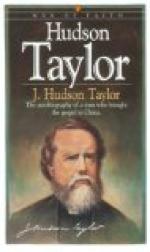=Stevens’ Castle.=—About midway between Desbrosses Street and 42d Street Pier will be seen on the Jersey Shore a wooded point with sightly building, known as Stevens’ Castle, home of the late Commodore Stevens, founder of the Stevens Institute of Technology. Above this are the Elysian Fields, near the river bank, known in early days as a quiet resort but now greatly changed in the character of its visitors. On the left will also be seen the dome and tower of St. Michael’s Monastery, and above this Union Hill.
=The Trap Rock Ridge=, which begins to show itself above the Elysian Fields, increases gradually in height to the brow of the Palisades. West of Bergen Heights and Union Hill flows the Hackensack River parallel to the Hudson, and at this point only about two miles distant.
* * *
How still with all her towers and domes
The city sleeps on yonder
shore,—
How many thousand happy homes
Yon starless sky is bending
o’er.
Park Benjamin.
* * *
=Forty-Second Street to One Hundred and Twenty-Ninth.=
=The 42d Street Pier= is now at hand, convenient of access to travelers, as the 42d Street car line crosses Manhattan intersecting every “up and down” surface, subway or elevated road in the City, as does also the Grand, Vestry and Desbrosses Street at the lower landing. While passengers are coming aboard we take pleasure in quoting the following from Baedeker’s Guide to the United States: “The Photo-Panorama of the Hudson, published by the Bryant Union Publishing Co., New York City (price 50 cents), shows both sides of the river from New York to Albany, accurately represented from 800 consecutive photographs. This new and complete object-guide will be of service to the tourist, and can be had at the steamers’ news stands, head of grand stairway, or it will be sent by publishers, postpaid, on receipt of price.”
=Weehawken= with its sad story of the duel between Hamilton and Burr is soon seen upon the west bank. A monument once marked the spot, erected by the St. Andrews Society of New York City on the ledge of rock where Hamilton fell early in the morning of the eleventh of July, 1804. The quarrel between this great statesman and his malignant rival was, perhaps, more personal than political. It is said that Hamilton, in accordance with the old-time code of honor, accepted the challenge, but fired into the air, while Burr with fiendish cruelty took deliberate revenge. Burr was never forgiven by the citizens of New York and from that hour walked its streets shunned and despised. Among the many poetic tributes penned at the time to the memory of Hamilton, perhaps the best was by a poet whose name is now scarcely remembered, Mr. Robert C. Sands. A fine picture of Hamilton will be found in the New York Chamber of Commerce where the writer was recently shown the following concise paragraph from Talleyrand: “The three greatest men of my time, in my opinion, were Napoleon Bonaparte, Charles James Fox and Alexander Hamilton and the greatest of the three was Hamilton.”




